Technology and Art #2 - Engineers as Artists in the 1950s
In the 1950s, most computers were built for and used by the military. The most brilliant technical minds were consumed with developing more powerful computers to defend the country from nuclear attacks. They were under relentless pressure to deliver quantum leaps in technology. Still, despite the impossible schedules, their devotion to engineering, and constant monitoring by their bosses… these engineers found time to create art on these new powerful computers.
The First Computer Game
During World War II, the US Navy asked MIT to build a flight simulator. Up to that point, computers were only able to process each bit of data serially, which meant each bit was processed one at a time. Since a flight simulator needed to update multiple pieces of information concurrently, including air speed, altitude, and direction, the current computers were unable to meet the Navy’s needs.
The engineers at MIT began to build a massively parallel computer. It included sixteen processing units, so it could process a full 16-bit word (2-bytes) in one cycle. As a result, it could process almost 20,000 operations per second, which was, unsurprisingly, sixteen times faster than any other computer in the world. Today an iPhone can handle 17 trillion operations per second, but it still uses the same “bit parallel” architecture that the MIT team invented.
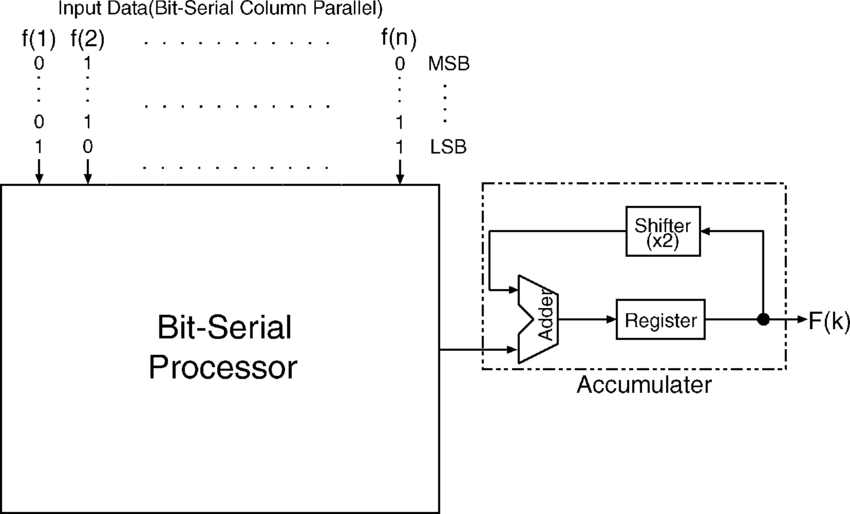
By 1949, the system, known as Whirlwind, was able to solve math equations, but the team faced another problem. Unlike most computations that just output their calculations via indicator lights or a teleprinter, the flight simulator users would need a monitor. The engineers decided to use an oscilloscope monitor for their output.
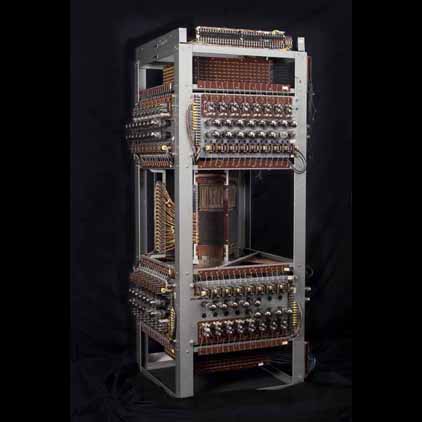
Since oscilloscope monitors were small, monochrome, and crude, the Whirlwind team wanted to test that it would work for them. Instead of simply testing the actual flight simulator, however, they chose something more artistic. They created the first graphical computer game. Given the limited processing power and monitor, the game was simple. There was a floor (a straight line) with a hole in it. The purpose was to try to drop a bouncing ball so it would fall through the hole in the floor. While it may not have been as artistic as Ben Laposky’s Oscillons , the engineers created an interactive, animated game.
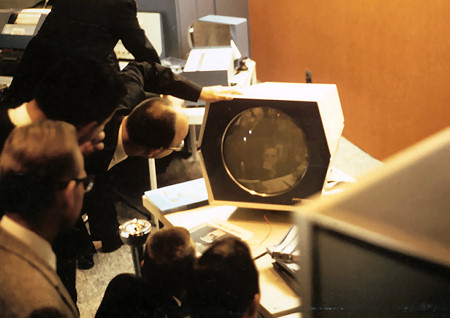
How did monitors work in 1950?
Today there are a variety of technologies used to make monitors, but in 1950, Cathode Ray Tube (CRT) technology was the only option. First proposed in the late 1890s, CRT monitors had been part of oscilloscopes for over three decades.
The core of CRT technology is a vacuum sealed glass tube. At the small, back-end of the tube, there is a glowing filament, just like you would find in a pre-LED lightbulb. The filament heats the cathode which releases electrons. The vacuum tube then sends those electrons as a beam to the large “monitor” end of the tube. The monitor has a phosphor layer (usually made of zinc sulfide, not phosphorous). When the electrons hit the phosphor layer, it lights up.
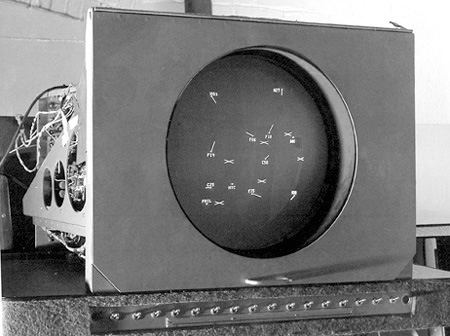
The CRT varies the direction and intensity of the electron beam to make specific images. There are two internal deflection plates, to guide the beam to the desired part of the monitor. A horizontal plate controls the x-coordinate and a vertical plate controls the y-coordinate. To get different brightness, the monitor simply varies the intensity of the electron beam - which is done by increasing or decreasing the heat of the filament.
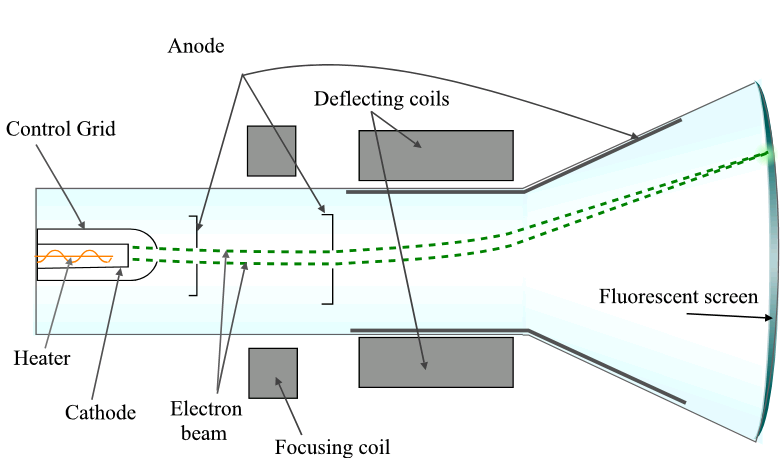
Once the computer engineers had a monitor, their artistic sides truly emerged.
The First Computer Generated Image?
After the Soviets successfully tested a nuclear bomb, the US began to worry about a nuclear attack from the Soviet Union. Since the USSR did not have long-range missiles yet, the threat was from Soviet bombers dropping a nuclear bomb on the United States. The Air Force asked IBM and MIT to create a computer that could detect possible Soviet incursions into US airspace. The algorithm was to compare the expected airline flight paths with what was being observed on radar. If there was an anomaly, the system would alert the operator.
The team designed a computer that was larger and more powerful than anything before it. To get even more parallelism, the engineers actually connected two massive computers. These computers, named AN/FSQ-7, cost almost $2 billion apiece and consumed over ½ acre of space. One computer did the calculations, and the other ran the display - showing what was in the air and identifying the unexpected object or objects. The display was a “massive” 19-inch CRT display.
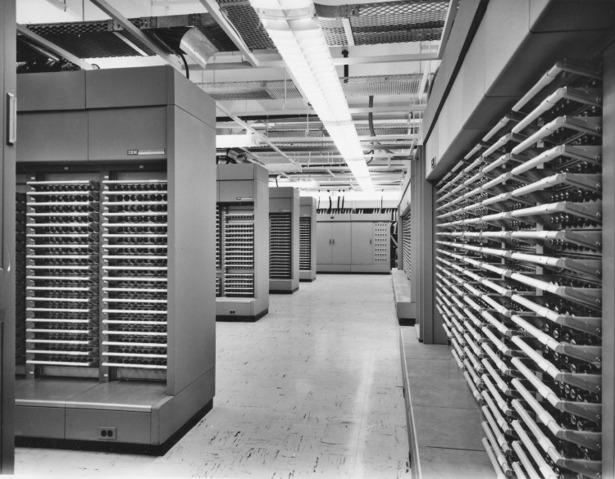
By 1958, the US Air Force had built 21 centers, known as Semi-Automatic Ground Environment (SAGE), across the United States. Each center had two of the AN/FSQ-7 computers in them.
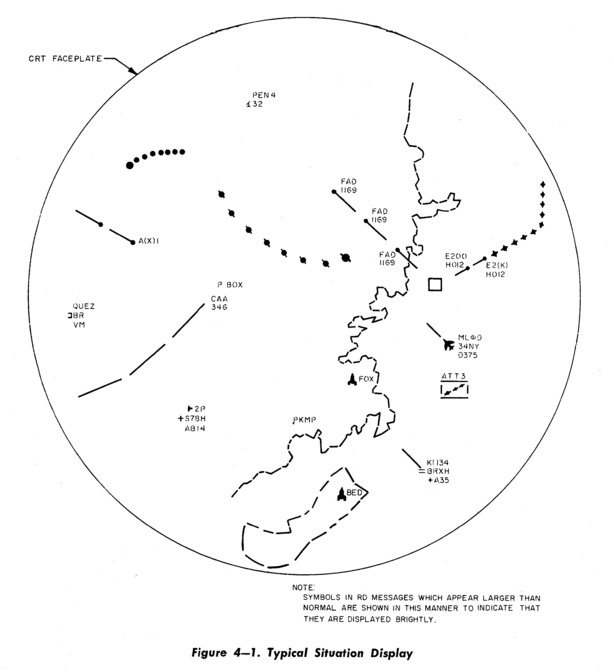
In one of the centers, a programmer decided to create the first computer-generated image. With almost $4 billion of computer equipment, he created a program on punch cards that generated a variety of vectors on the screen. When the program was run, the result was the outline of a human female. For over three years, the team ran that program at the end of the shift. They claimed that it was an excellent diagnostic test to ensure that the monitor was still working correctly. In reality, it was a chance for them to express themselves amid the constant stress and fear of running the most expensive, important computers in the country.
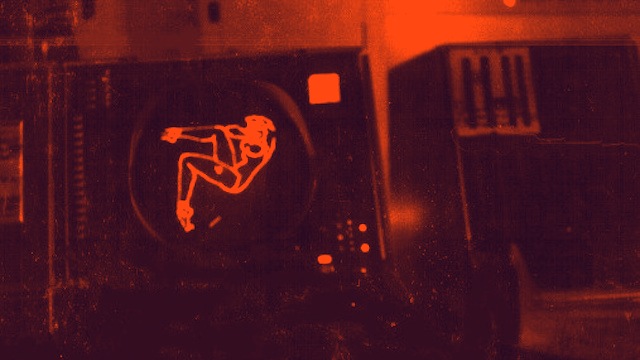
When people think of artists, they don’t usually picture engineers. For decades, STEM was always treated as separate from the arts. But, from the very inception of computers, engineers have shown that they want to express themselves artistically - whether it is with a game or a computer-generated image. Engineering and art are two sides of the same clustered computer.
